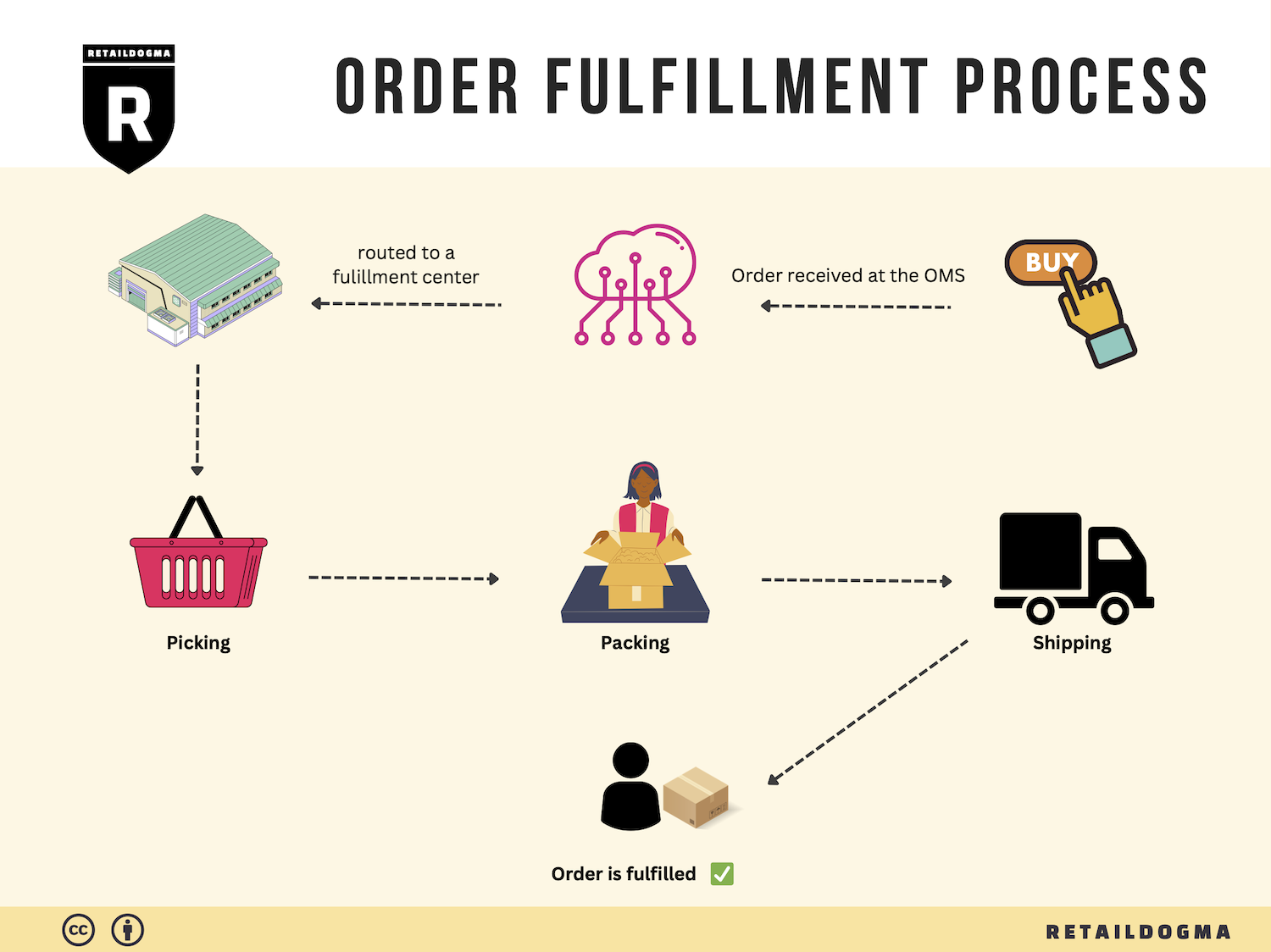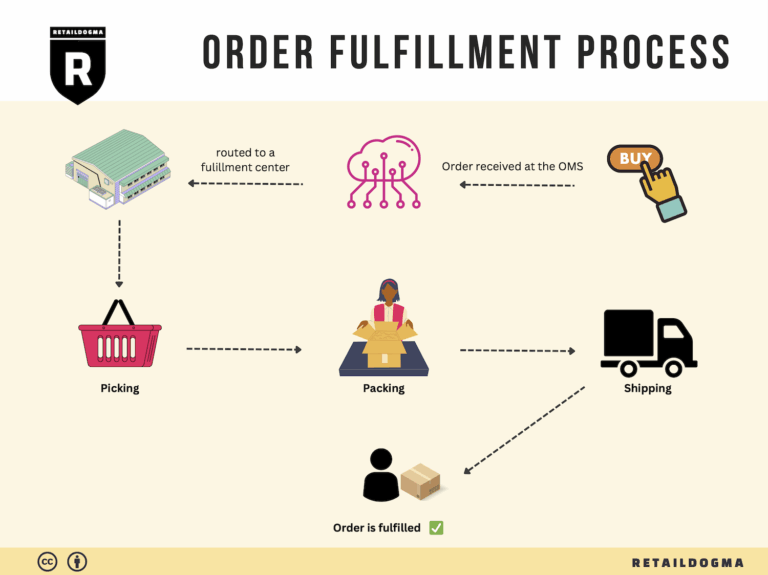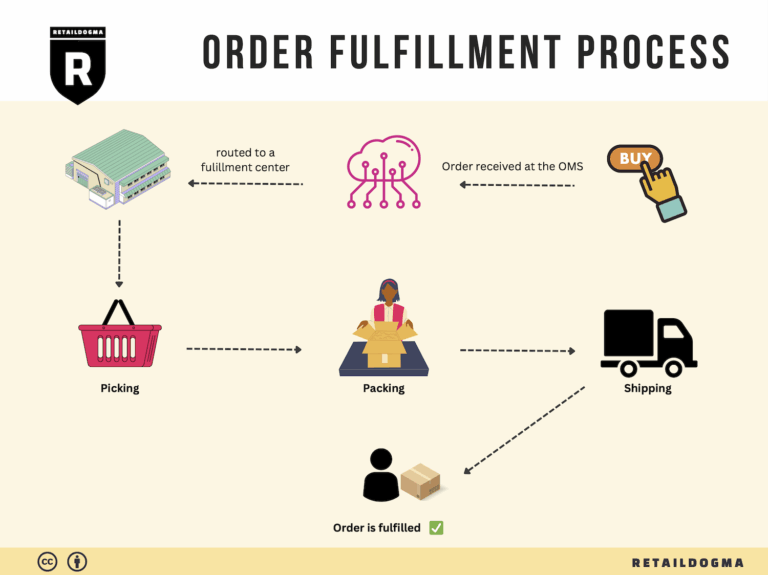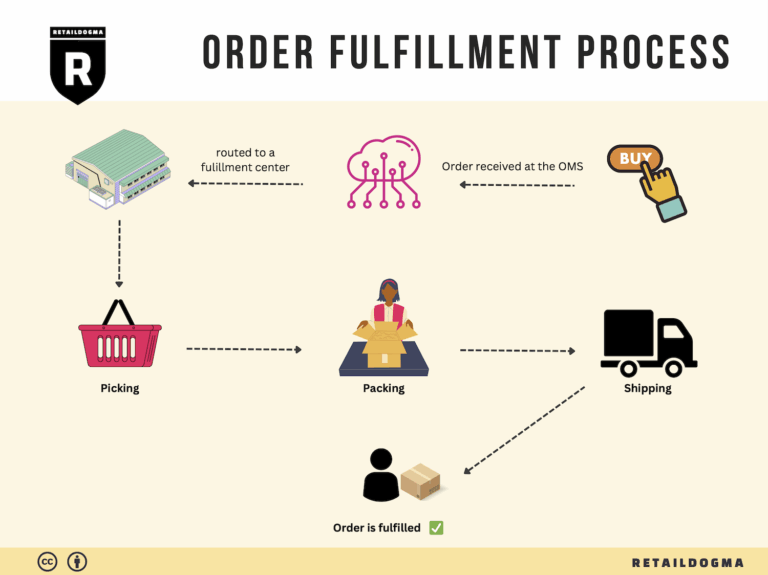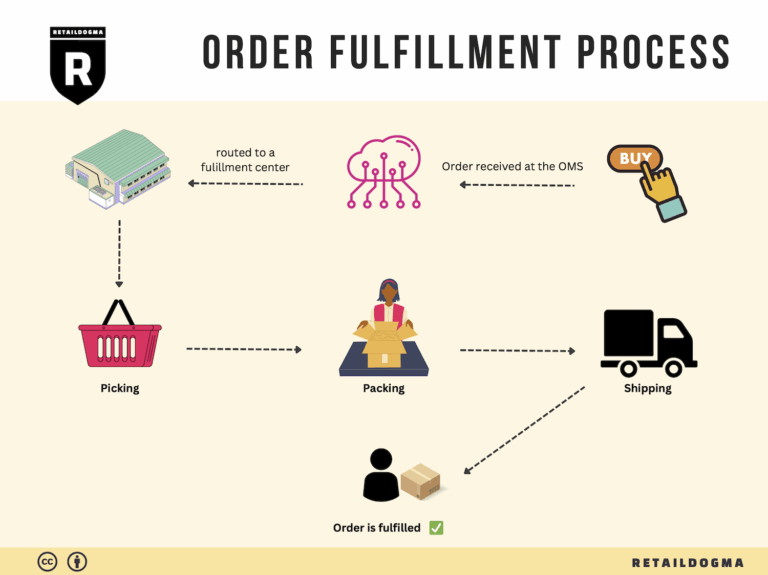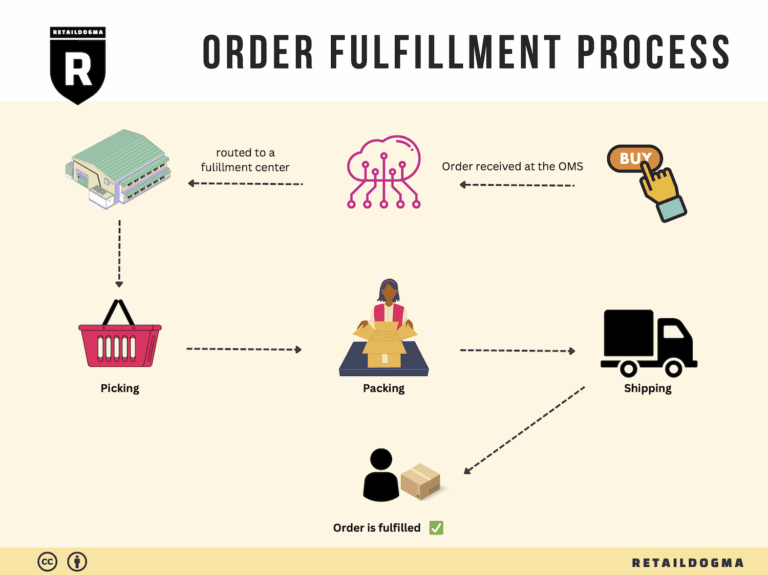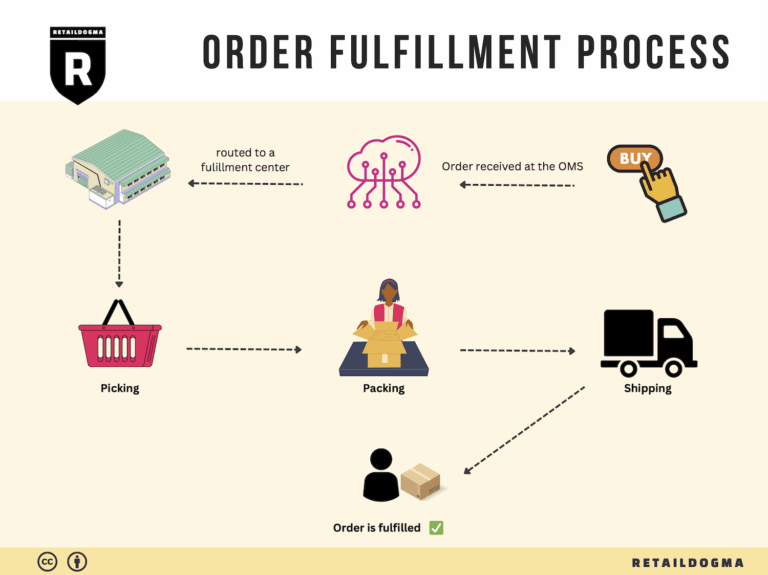What Is A Fulfillment Center? A Complete Guide (2025)
What is E-commerce Fulfillment? An Introduction for Growing Businesses
Understanding the Fulfillment Challenge
As your e-commerce business begins to grow, you might find yourself grappling with an increasingly common challenge: the overwhelming task of packing and shipping orders efficiently. This crucial aspect of your operations can quickly become a bottleneck, diverting your focus from customer engagement and business development. Whether you’re a budding entrepreneur or a seasoned operations manager, understanding the intricacies of e-commerce fulfillment is essential for scaling your sales and logistics without losing your sanity.
At its core, fulfillment is the entire process of getting a product into the hands of your customers. It encompasses everything from receiving inventory, processing orders, picking and packing items, to shipping them out and handling returns. With various fulfillment models available, such as Third-Party Logistics (3PL) and Fulfillment by Amazon (FBA), the decision on how to manage this process can have significant implications for your business’s operational efficiency and customer satisfaction.
This guide aims to demystify e-commerce fulfillment by exploring the different models available to growing businesses. We’ll delve into the core services that fulfillment partners typically offer, including inventory management, order processing, and shipping logistics. Understanding these services will help you identify what best aligns with your business needs.
Choosing the right fulfillment partner is a critical decision that can impact your bottom line. We will discuss key considerations to evaluate potential partners, such as their technology capabilities, scalability, and customer service. Additionally, pricing structures can vary widely among fulfillment providers, and we’ll provide insights into how to navigate these options to ensure you get the best value for your investment.
The ultimate goal of this guide is to empower you with the knowledge and tools necessary to make informed decisions about your logistics strategy. By understanding the fundamentals of e-commerce fulfillment, you can streamline your operations, enhance customer satisfaction, and position your business for sustainable growth. Whether you’re looking to outsource fulfillment or optimize your current processes, this comprehensive resource will serve as your roadmap to success.
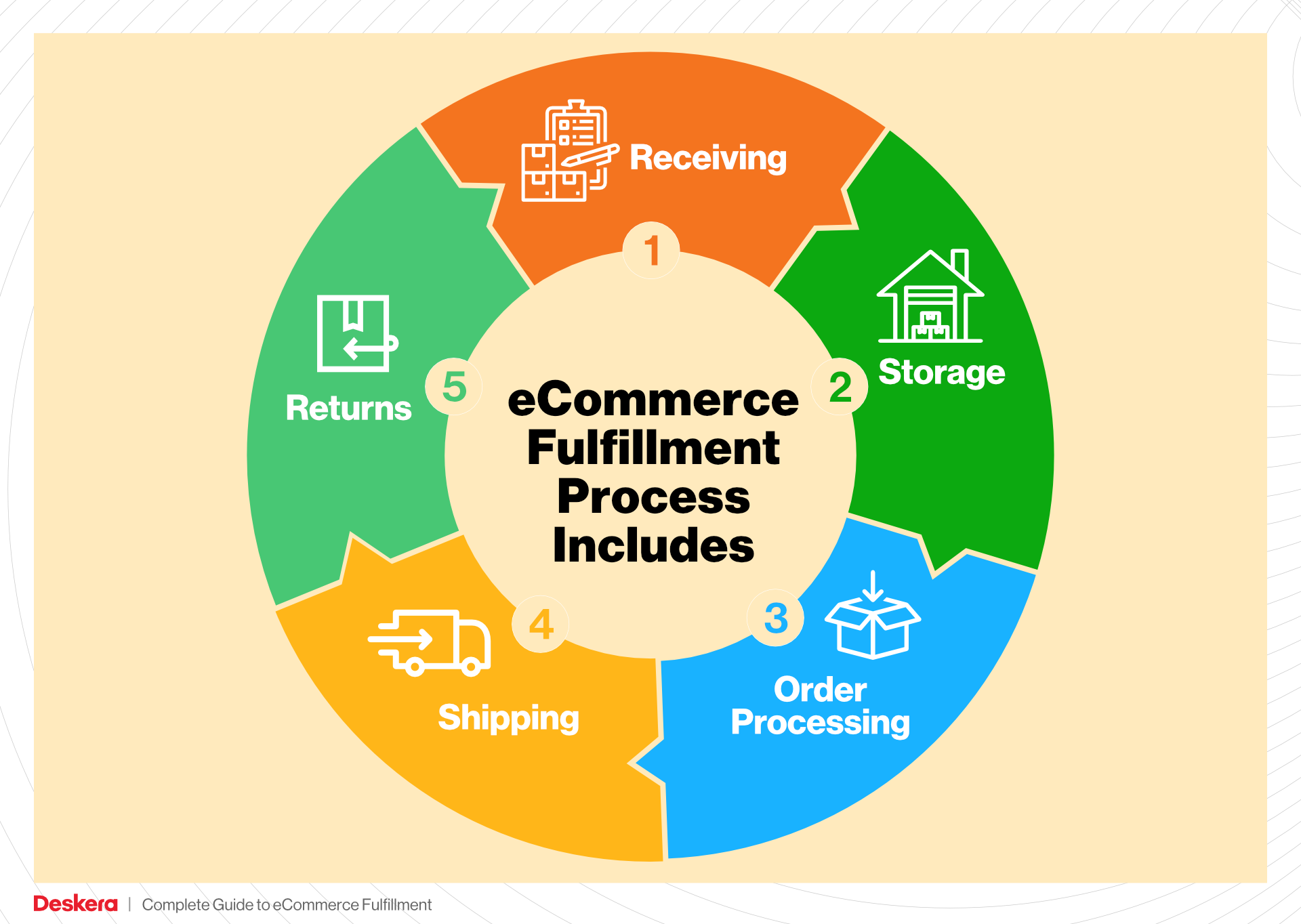
What You’ll Learn In This Guide
- What is E-commerce Fulfillment? An Introduction for Growing Businesses
- The Order Fulfillment Process: From ‘Buy’ Button to Customer’s Door
- Comparing Fulfillment Models: In-House vs. 3PL vs. Dropshipping
- A Deep Dive into Amazon FBA: Pros, Cons, and Who It’s For
- Core Services Offered by Fulfillment Centers
- How to Choose a Fulfillment Partner: A 6-Point Checklist
- Understanding Fulfillment Pricing: A Breakdown of Common Fees
- Frequently Asked Questions (FAQs) about Fulfillment
- Conclusion: Is Outsourcing Fulfillment the Right Move for Your Business?
- Important Disclaimer
The Order Fulfillment Process: From ‘Buy’ Button to Customer’s Door
1. Receiving Inventory
The first step in the order fulfillment process is the receiving of inventory. When products arrive at the fulfillment center, they must be checked against the purchase orders to ensure accuracy. This process involves verifying quantities and inspecting for any damages. A key term associated with this step is SKU (Stock Keeping Unit), which is a unique identifier assigned to each product to streamline inventory management.
This step is crucial because any discrepancies at this stage can lead to inventory inaccuracies, affecting stock levels and ultimately customer satisfaction. Proper receiving procedures ensure that the right products are available for picking, thus minimizing delays in order fulfillment. Additionally, efficient receiving practices can help in maintaining optimal stock levels, reducing the risk of stockouts or overstock situations.
2. Warehouse Storage
Once inventory has been received and verified, it is then stored in designated areas within the warehouse. The storage process involves organizing products in a manner that maximizes space and facilitates easy access. Different products may be stored in various zones based on size, type, or turnover rate. A common term used in this step is FIFO (First In, First Out), which refers to the inventory management method where the oldest stock is sold first.
Effective warehouse storage is essential for operational efficiency. Proper organization reduces the time spent searching for items and helps maintain an orderly environment, which can enhance safety and productivity. By implementing strategic storage practices, businesses can optimize their space utilization and ensure a smooth transition to the next step in the fulfillment process.
3. Order Picking
Order picking is the process of retrieving items from the warehouse to fulfill customer orders. Once an order is placed, pickers use a pick list, which details the items required for each order. The pick list is generated based on the items’ SKUs and their locations within the warehouse. This method ensures that the correct products are selected and reduces the likelihood of errors.
This step is critical because it directly impacts order accuracy and speed. Efficient picking processes, such as batch picking or zone picking, can significantly enhance productivity. By optimizing the picking strategy, businesses can ensure that orders are fulfilled quickly and accurately, leading to improved customer satisfaction and repeat business.
4. Order Packing
After items have been picked, they proceed to the packing stage. Here, products are carefully packed into boxes or containers, and appropriate protective materials are added to prevent damage during transit. An important aspect of this step is packaging optimization, which involves selecting the right box size and materials to minimize shipping costs and enhance sustainability.
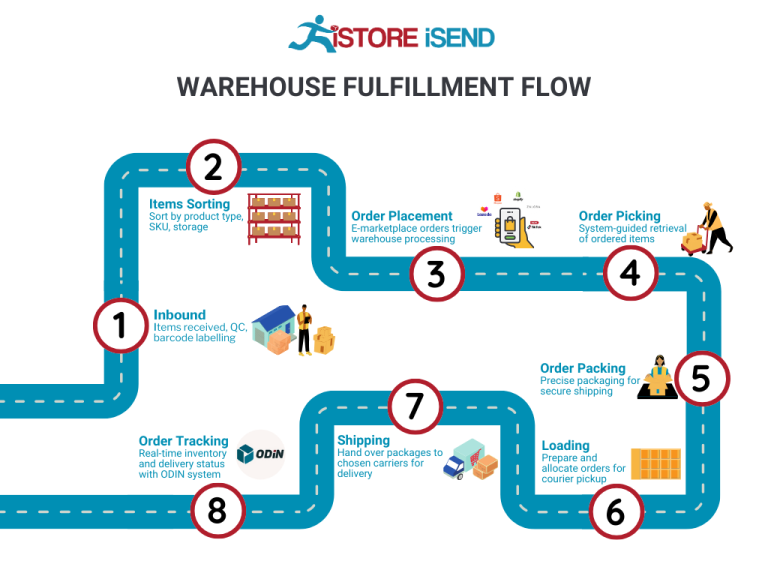
Packing is vital for ensuring that products arrive at the customer’s door in perfect condition. Proper packing techniques also help reduce shipping costs, as appropriately sized packages can lower dimensional weight fees. Additionally, well-packed orders contribute to a positive unboxing experience for customers, reinforcing brand loyalty and encouraging repeat purchases.
5. Shipping & Delivery
The final step in the order fulfillment process is shipping and delivery. Once orders are packed, they are labeled and prepared for dispatch. Shipping logistics involve selecting the appropriate carriers and shipping methods based on factors such as cost, speed, and destination. A key term in this phase is last-mile delivery, which refers to the final leg of the delivery journey from the distribution center to the customer’s doorstep.
This step is crucial as it determines how quickly and efficiently customers receive their orders. Effective shipping and delivery strategies can significantly enhance customer satisfaction and retention. By leveraging technology and data analytics, businesses can optimize their shipping processes, track shipments in real time, and provide customers with accurate delivery estimates, ultimately improving their overall experience.
By understanding and optimizing each of these five steps in the order fulfillment process, e-commerce businesses can scale their operations effectively, enhance customer satisfaction, and drive growth in a competitive marketplace.
Comparing Fulfillment Models: In-House vs. 3PL vs. Dropshipping
Fulfillment Model Comparison
| Model | Who Handles Inventory | Best For (Business Stage) | Key Advantage | Key Disadvantage |
|---|---|---|---|---|
| In-House Fulfillment | Business Owner | Startups to Established | Full control over inventory and processes | High overhead costs and resource demands |
| Third-Party Logistics (3PL) | 3PL Provider | Growing to Scaling | Scalability and expertise in logistics | Less control over inventory and potential delays |
| Dropshipping | Supplier | Startups and Small Businesses | Low upfront investment and risk | Lower margins and reliance on supplier reliability |
In-House Fulfillment
In-house fulfillment refers to the practice of managing all aspects of inventory and order processing within your own facilities. This model is often employed by startups and established businesses that want complete control over their logistics and customer experience. With in-house fulfillment, businesses can customize their operations to meet specific customer needs, maintain quality control, and optimize their supply chain processes. However, the downside is significant: it typically requires a considerable investment in infrastructure, including warehouse space, staffing, technology, and equipment. Additionally, managing inventory in-house can lead to higher overhead costs and greater complexity as the business scales. Therefore, this model is best suited for businesses that have the resources and capacity to manage their fulfillment needs effectively.
Third-Party Logistics (3PL)
Third-party logistics (3PL) involves outsourcing your fulfillment operations to a specialized logistics provider. This model is ideal for businesses that are in a growth phase and need to scale their operations without the burden of managing logistics themselves. 3PL providers offer a wide range of services, including warehousing, inventory management, order fulfillment, and shipping. They have the expertise and technology to streamline these processes, allowing businesses to focus on core competencies such as marketing and product development. The key advantage of using a 3PL is scalability; as your business grows, your logistics partner can easily adapt to increased order volumes. However, the trade-off is that you relinquish some control over your inventory and fulfillment processes, which can lead to potential delays or errors if the 3PL does not meet your standards. Thus, businesses should carefully vet potential 3PL partners to ensure alignment with their operational goals.
Dropshipping
Dropshipping is a fulfillment model where retailers sell products without holding any inventory. Instead, when a customer places an order, the retailer purchases the item from a third-party supplier, who then ships it directly to the customer. This model is particularly appealing for startups and small businesses due to its low upfront investment and minimal financial risk. Retailers can offer a wide variety of products without the costs associated with maintaining inventory or managing logistics. However, dropshipping comes with its own set of challenges. The primary downside is the lower profit margins due to reliance on suppliers, who may not always provide consistent quality or timely shipping. Additionally, since the retailer does not handle the product directly, customer service can be complicated, especially if issues arise with the supplier. Therefore, while dropshipping can be an effective way to enter the market, it requires careful selection of suppliers and a robust strategy for managing customer expectations.
In conclusion, choosing the right fulfillment model depends on various factors, including your business stage, available resources, and operational goals. Each model offers distinct advantages and disadvantages that can significantly impact your overall efficiency and customer satisfaction. As you scale your e-commerce business, consider these factors carefully to select the fulfillment strategy that aligns with your growth objectives.
A Deep Dive into Amazon FBA: Pros, Cons, and Who It’s For
Understanding Fulfillment by Amazon (FBA)
Fulfillment by Amazon (FBA) is a service provided by Amazon that allows sellers to store their products in Amazon’s fulfillment centers. Amazon then takes care of storage, packaging, shipping, and customer service on behalf of the seller. This model allows e-commerce businesses to leverage Amazon’s vast logistics network and customer base, thereby streamlining their operations and enhancing their sales potential.
How FBA Works
-
Inventory Storage: Sellers send their products to Amazon’s fulfillment centers. Once received, the items are stored until they are sold.
-
Order Processing: When a customer places an order for a product fulfilled by Amazon, the fulfillment center processes the order. This includes picking the item from the shelves, packing it, and shipping it directly to the customer.
-
Customer Service and Returns: Amazon handles all customer inquiries and returns related to FBA products. This service includes processing returns, issuing refunds, and managing customer feedback.
-
Multi-Channel Fulfillment: Sellers can also use Amazon’s fulfillment services for orders placed on other platforms, not just Amazon.com. This feature expands the seller’s reach and simplifies logistics.
Pros of Fulfillment by Amazon (FBA)
-
Prime Eligibility: Products fulfilled by Amazon are automatically eligible for Amazon Prime, which can significantly enhance visibility and sales. Prime members often prefer items with this badge due to the promise of fast and free shipping.
-
Customer Trust: Leveraging Amazon’s brand reputation can build customer confidence in your products. When customers see “Fulfilled by Amazon,” they are often more likely to trust the quality of the product and the reliability of the service.
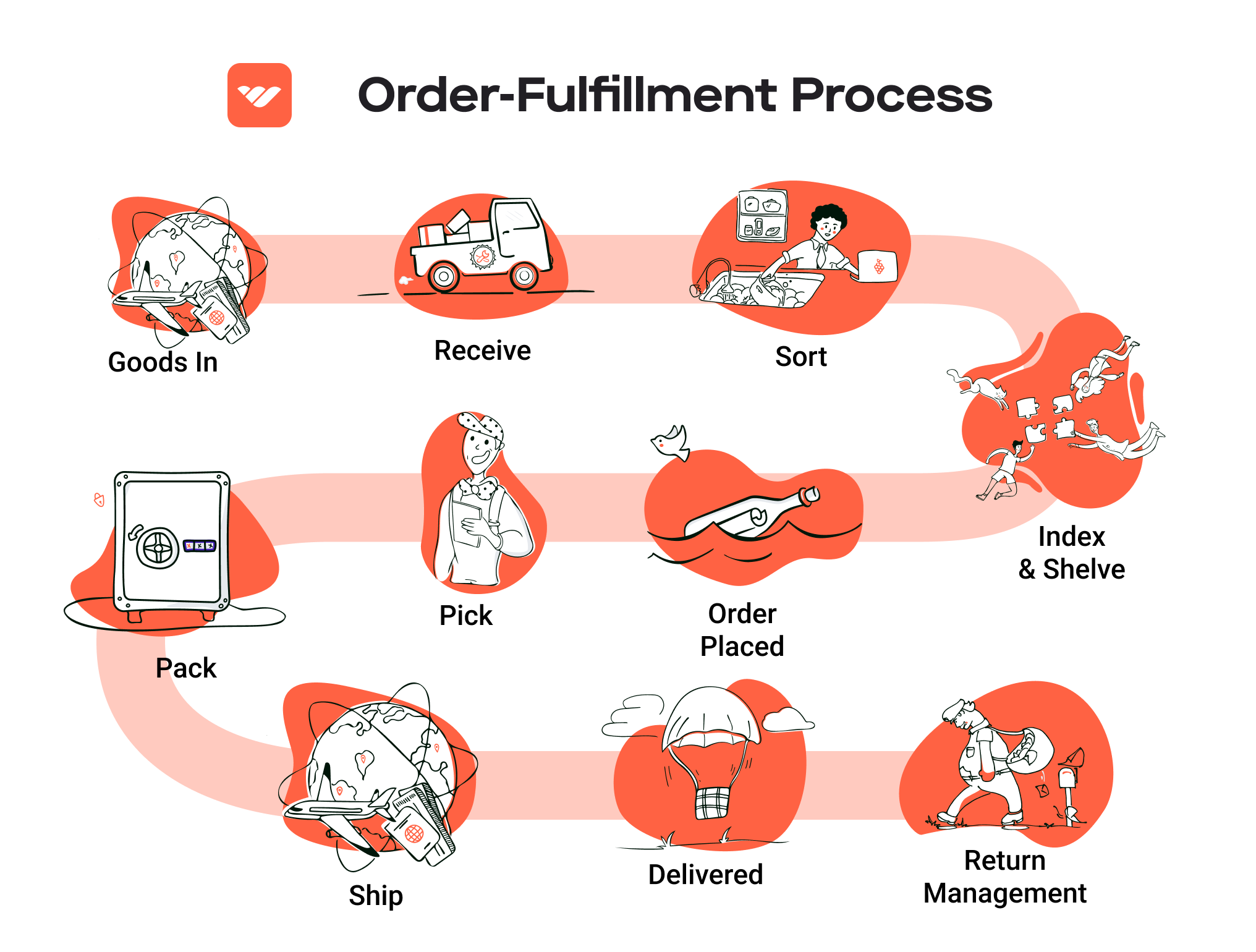
-
Scalability: FBA allows sellers to scale their business without the need to invest heavily in warehousing and logistics infrastructure. As demand grows, sellers can send more inventory to Amazon’s fulfillment centers.
-
Streamlined Operations: By outsourcing fulfillment to Amazon, sellers can focus on other areas of their business, such as marketing and product development, rather than managing logistics.
-
Multi-Channel Fulfillment: As mentioned earlier, FBA allows for order fulfillment from various sales channels, not just Amazon. This flexibility can help sellers optimize their inventory management and reduce overhead.
-
Access to Amazon’s Tools: FBA users gain access to Amazon’s robust analytics and reporting tools, which can help in making informed business decisions.
Cons of Fulfillment by Amazon (FBA)
-
High Fees: FBA comes with various fees, including storage fees, fulfillment fees, and additional costs for returns and special handling. These fees can quickly add up, particularly for slow-moving inventory.
-
Strict Inventory Rules: Amazon has stringent policies regarding inventory management. Sellers must adhere to specific guidelines concerning packaging, labeling, and shipping inventory to avoid penalties or removal of their products from the platform.
-
Commingling Risks: Products from different sellers may be stored together in Amazon’s warehouses. This commingling can lead to issues if a customer receives a defective or counterfeit item, potentially affecting the seller’s reputation and sales.
-
Loss of Control: By outsourcing fulfillment, sellers relinquish some control over their inventory and customer experience. This can be particularly concerning for brands that prioritize customer service and packaging aesthetics.
-
Limited Brand Customization: FBA offers limited options for branding and packaging, which may dilute a brand’s unique identity. Sellers may find it challenging to create a memorable unboxing experience for their customers.
-
Inventory Limits: Amazon imposes limits on how much inventory sellers can store in their fulfillment centers, especially for new sellers. This can hinder growth for those with higher volume sales.
Who is FBA Best For?
Fulfillment by Amazon is particularly well-suited for:
-
Small to Medium-Sized Businesses: Companies looking to scale without the overhead of managing logistics can benefit significantly from FBA.
-
New Sellers: Those entering the e-commerce space can leverage Amazon’s infrastructure and brand reputation to establish themselves more quickly.
-
Businesses with Seasonal Products: Companies that experience fluctuations in demand can utilize FBA to scale their logistics up or down without significant investment in warehousing.
-
Brands Seeking Exposure: Sellers looking to increase their product visibility through Amazon’s massive customer base will find FBA advantageous.
-
Multi-Channel Sellers: Businesses that sell on various platforms can streamline their operations by using FBA for all order fulfillment.
In summary, while FBA offers numerous benefits, including access to Amazon’s vast logistics capabilities and customer trust, it also presents challenges such as high fees and strict inventory management rules. Careful consideration of these factors is essential for businesses looking to leverage this powerful fulfillment model.
Core Services Offered by Fulfillment Centers
Inventory Management & Warehousing
Inventory management and warehousing are foundational services provided by fulfillment centers. These facilities offer dedicated spaces where e-commerce businesses can store their products securely. The inventory management aspect involves systematic tracking of stock levels, order processing, and replenishment to ensure that businesses never run out of their best-selling items.
Benefits:
1. Optimized Stock Levels: Fulfillment centers employ advanced inventory management systems that provide real-time visibility into stock levels. This helps businesses avoid overstocking or stockouts, leading to better cash flow management.
2. Space Efficiency: By utilizing a fulfillment center, businesses can save on the costs associated with leasing or maintaining their own warehouse space. This is particularly advantageous for small to medium-sized enterprises that may not have the capital for large storage facilities.
3. Scalability: As businesses grow, so do their inventory needs. Fulfillment centers allow for easy scalability, enabling businesses to expand their inventory without the logistical headaches of managing a larger space.
Pick and Pack Services
Pick and pack services are crucial in the order fulfillment process. This service involves selecting the ordered items from the warehouse (picking) and packaging them appropriately for shipment (packing). Fulfillment centers utilize technology such as barcode scanning to streamline this process, ensuring accuracy and efficiency.
Benefits:
1. Speed and Accuracy: With trained staff and automated systems, fulfillment centers can process orders quickly, reducing the time from order placement to shipment. This speed enhances customer satisfaction and can lead to repeat business.
2. Error Reduction: Utilizing technology minimizes the risk of human error during the picking and packing process. Accurate order fulfillment is vital for maintaining customer trust and loyalty.
3. Custom Packaging Solutions: Many fulfillment centers offer customizable packing options, including branded packaging. This allows businesses to enhance their brand presence even during the shipping phase, contributing to a better customer experience.
Kitting and Assembly
Kitting and assembly services involve the grouping of individual items into ready-to-ship sets or kits. This service is particularly beneficial for businesses offering products that are often sold together, such as a camera with a lens and accessories, or meal kits.
Benefits:
1. Enhanced Product Offering: Kitting allows businesses to create bundled products that can offer greater value to customers. This can increase average order value and improve sales.
2. Streamlined Operations: By outsourcing kitting and assembly to a fulfillment center, businesses can focus on their core competencies, such as marketing and product development, rather than spending time on labor-intensive assembly tasks.
3. Inventory Management Simplification: Kitting simplifies inventory management, as businesses can manage fewer SKUs by bundling products together. This can also lead to reduced storage costs and improved inventory turnover.
Returns Management (Reverse Logistics)
Returns management, often referred to as reverse logistics, is a critical service offered by fulfillment centers. This process involves the handling of returned products, from receiving and inspecting them to restocking or disposing of items as necessary.
Benefits:
1. Customer Satisfaction: Efficient returns management processes can enhance customer satisfaction. A hassle-free return process encourages customers to shop with confidence, knowing they can easily return items if needed.
2. Cost Efficiency: By managing returns through a fulfillment center, businesses can reduce the operational costs associated with processing returns in-house. This includes labor, shipping, and restocking fees.
3. Data Insights: Returns management can provide valuable insights into customer behavior and product performance. Analyzing return data can help businesses identify trends, address quality issues, and adjust their product offerings accordingly.
In conclusion, partnering with a fulfillment center offers e-commerce businesses a suite of core services that enhance operational efficiency, improve customer satisfaction, and support scalable growth. By leveraging these services, businesses can focus on their strategic objectives while ensuring that their logistics and fulfillment processes are in expert hands.
How to Choose a Fulfillment Partner: A 6-Point Checklist
Location & Warehouse Network
Importance: The geographical location of your fulfillment partner’s warehouses can significantly impact shipping costs and delivery times. A partner with multiple strategically located warehouses can help you reach customers more efficiently, especially if you operate nationally or internationally.
Questions to Ask:
– Where are your warehouses located, and how do they align with our primary customer bases?
– What is your average shipping time to various regions?
– Do you have a network of warehouses that can accommodate seasonal fluctuations in demand?
Technology & Integrations
Importance: Modern fulfillment requires robust technology to manage inventory, orders, and shipping efficiently. An ideal fulfillment partner should offer seamless integrations with your e-commerce platform, allowing for real-time inventory updates and order tracking.
Questions to Ask:
– What technology do you use for inventory management, and how does it integrate with our existing systems?
– Can your system provide real-time tracking for orders, and how do you handle stock levels?
– Are there APIs available for custom integrations, and what support do you offer for technical issues?
Specializations (e.g., Cold Storage, Oversized Items)
Importance: Depending on your product types, you may need a partner with specific capabilities such as temperature-controlled storage or experience handling oversized items. Choosing a fulfillment partner that specializes in your product category can enhance efficiency and reduce the risk of damage.
Questions to Ask:
– Do you have experience fulfilling orders for our specific product type (e.g., perishables, fragile items, oversized goods)?
– What special handling procedures do you have in place for these types of products?
– Can you provide examples or case studies of other clients with similar needs?
Scalability & Capacity
Importance: As your business grows, your fulfillment needs will evolve. It’s crucial to partner with a fulfillment provider that can scale alongside your business, whether through additional warehouse space, staff, or technology upgrades.
Questions to Ask:
– How do you handle seasonal spikes in order volume?
– What is your capacity for handling increased order volumes, and how quickly can you scale?
– Can you provide a timeline for onboarding new products and increasing warehouse space if needed?
Pricing and Contracts
Importance: Understanding the pricing structure and contract terms is essential to avoid unexpected costs. Transparent pricing can help you budget effectively, while flexible contract terms can provide peace of mind as your business evolves.
Questions to Ask:
– What are your pricing models (e.g., per order, per item, storage fees)?
– Are there any additional costs we should be aware of (e.g., returns, packaging, special handling)?
– What are the terms of the contract, and how flexible are they if our business needs change?
Customer Support & Reviews
Importance: Excellent customer support is vital for addressing issues quickly and maintaining operational efficiency. Checking reviews and testimonials can provide insights into a partner’s reliability and service quality.
Questions to Ask:
– What customer support options do you provide (e.g., phone, email, live chat)?
– What is your response time for support inquiries?
– Can you provide references or case studies from clients in our industry?
Conclusion
Choosing the right fulfillment partner is a critical decision that can influence your business’s operational efficiency and customer satisfaction. By carefully evaluating potential partners using this checklist, you can ensure that you make an informed choice that aligns with your business goals. Each point in this checklist is designed to prompt thoughtful discussions and uncover essential information that will aid in selecting a fulfillment partner that meets your unique needs.
Understanding Fulfillment Pricing: A Breakdown of Common Fees
Initial Setup Fees
When partnering with an Amazon Fulfillment Center, the first cost to consider is the initial setup fee. This fee is typically charged once when you start using the fulfillment services. It covers the onboarding process, which includes account setup, integration with your e-commerce platform, and initial consultations to establish your fulfillment strategy. The amount can vary significantly based on the complexity of your business needs and the level of support you require.
To calculate initial setup fees, consider factors like the number of SKUs you plan to manage, the specific services you need (such as special packaging or labeling), and any additional software integration. Some fulfillment centers may offer promotional rates or waivers for this fee, so it’s beneficial to shop around.
Receiving Fees
Receiving fees are charged when your products arrive at the fulfillment center. This fee covers the labor involved in unloading, inspecting, and stocking your items in the warehouse. Typically, receiving fees are calculated per pallet or per unit, depending on the fulfillment center’s pricing model.
The fee can vary based on the complexity of the receiving process. For example, if your products require special handling or labeling, you may incur higher fees. Additionally, the volume of goods being received can affect the overall cost; larger shipments might qualify for discounted rates. It’s essential to clarify the receiving process and any associated costs upfront to avoid unexpected charges.
Storage Fees (per pallet/bin)
Storage fees are assessed for the space your inventory occupies in the fulfillment center. These fees are typically calculated monthly and can be based on the number of pallets or bins your products occupy. The pricing model may vary, with some centers charging a flat rate per pallet and others using a tiered structure based on the total volume stored.
To calculate your storage fees, consider the size and weight of your products, as well as the expected turnover rate. High-turnover items may incur lower fees per unit compared to slow-moving inventory, which could lead to higher costs due to prolonged storage. Keep in mind that some fulfillment centers also charge additional fees for long-term storage, so maintaining an efficient inventory turnover is crucial for managing costs.
Pick & Pack Fees (per item/order)
Pick and pack fees are charged for the labor involved in selecting items from storage and preparing them for shipment. This fee is typically calculated per item or per order, depending on how the fulfillment center structures its pricing. For example, if a customer orders three items, you may be charged for picking each item individually.
The complexity of the order can also impact the fee. For instance, if your order requires special packaging or multiple SKUs, the pick and pack fee may be higher. To get an accurate estimate of these fees, analyze your average order size and frequency, and consider any specific requirements that might increase labor costs.
Shipping Fees
Shipping fees are incurred when your products are dispatched from the fulfillment center to the customer. These fees can vary widely based on factors such as the shipping method (standard, expedited, etc.), the destination, and the weight and dimensions of the package. Fulfillment centers often have partnerships with major carriers, which can sometimes provide discounted rates.
To accurately calculate shipping fees, consider your target market and the shipping preferences of your customers. If you anticipate a significant volume of orders, negotiating shipping rates with the fulfillment center or exploring flat-rate shipping options can help control costs.
Tips for Getting an Accurate Quote
-
Understand Your Needs: Clearly outline your business model, including the number of SKUs, average order sizes, and anticipated shipping volumes. This information will help fulfillment centers provide tailored quotes.
-
Request Detailed Pricing Breakdown: Ask for a comprehensive breakdown of all fees, including any potential hidden costs. This transparency will enable you to compare different providers effectively.
-
Negotiate: Don’t hesitate to negotiate fees based on your projected volume or if you have multiple fulfillment centers to choose from. Some centers may offer discounts for long-term contracts or high-volume shipments.
-
Consider Additional Services: If you require extra services like kitting, labeling, or special handling, ensure these are included in your quote to avoid surprises later.
-
Regularly Review Costs: As your business grows, periodically reassess your fulfillment costs to identify any areas for improvement or renegotiation. Keeping track of your expenses will help you maintain profitability as you scale.
By understanding these common fulfillment pricing models and strategically approaching your negotiations, you can optimize your logistics costs and enhance your business’s scalability.
Frequently Asked Questions (FAQs) about Fulfillment
1. Can you eat in an Amazon fulfillment center?
No, eating is generally prohibited on the warehouse floor. Employees are usually required to take breaks in designated areas away from the workstations to maintain cleanliness and safety standards.
2. What is the difference between a warehouse and a fulfillment center?
A warehouse primarily focuses on storing products, whereas a fulfillment center is designed to process orders and ship products directly to customers. Fulfillment centers often have more sophisticated systems for inventory management, order processing, and shipping logistics.
3. What is a 3PL (Third-Party Logistics)?
A 3PL is a service provider that manages logistics and supply chain operations for businesses. This can include warehousing, order fulfillment, transportation, and inventory management, allowing businesses to outsource these functions to improve efficiency and reduce costs.
4. How much do fulfillment services cost?
Costs for fulfillment services vary widely based on factors such as order volume, storage needs, and the complexity of services required. Typically, businesses can expect to pay a combination of storage fees, pick-and-pack fees, and shipping costs. It’s essential to compare different providers to find the best fit for your budget and needs.
5. What are the typical roles in an Amazon fulfillment center?
The main roles include stockers (receiving inventory), pickers (locating and retrieving items), packers (packing products for shipment), shippers (loading items onto transport), and problem solvers (addressing issues like damaged goods or missing inventory).
6. How does Amazon ensure timely order fulfillment?
Amazon employs advanced technology and data analytics to optimize inventory management and order processing. They also maintain a network of fulfillment centers strategically located to reduce shipping times and ensure products are readily available for fast delivery.
7. What measures are in place for worker safety in fulfillment centers?
Safety protocols include mandatory training, regular safety drills, and adherence to strict operational guidelines. Employees must wear protective gear, and facilities are designed to minimize hazards, with regular inspections to ensure compliance.
8. Can you tour an Amazon fulfillment center?
Tours of Amazon fulfillment centers are available, but they are often subject to long waitlists and specific eligibility criteria. Interested individuals should check Amazon’s official site for opportunities and availability.
9. What technologies are used in Amazon fulfillment centers?
Amazon utilizes a range of technologies, including barcode scanning systems, automated storage and retrieval systems, and robotics to enhance efficiency in picking and packing processes.
10. How can businesses benefit from using Amazon fulfillment services?
Using Amazon’s fulfillment services allows businesses to leverage Amazon’s extensive logistics network, enabling faster shipping times, improved customer satisfaction, and reduced operational burdens. This can be especially advantageous for small to medium-sized enterprises looking to scale their operations without investing heavily in their own infrastructure.
Conclusion: Is Outsourcing Fulfillment the Right Move for Your Business?
Evaluating the Benefits of Outsourcing Fulfillment
Outsourcing fulfillment can be a transformative decision for e-commerce businesses aiming to scale efficiently. One of the primary benefits is time savings. By leveraging a fulfillment partner, you can free up valuable hours spent on logistics management, allowing you to focus on strategic activities such as marketing, product development, and customer engagement. This shift not only enhances productivity but also drives growth as you can allocate resources to areas that directly impact revenue.
Another compelling advantage is scalability. As your business experiences fluctuations in order volume—whether due to seasonal demands or marketing campaigns—outsourcing provides the flexibility to scale operations up or down without the need to invest in additional infrastructure. A reliable fulfillment partner can handle increased demand seamlessly, ensuring that your customers receive their orders promptly, which is critical for maintaining satisfaction and loyalty.
Moreover, partnering with a fulfillment service brings expertise to the table. Experienced fulfillment centers often possess advanced technology and logistics strategies that can optimize inventory management, reduce shipping times, and improve order accuracy. Their established processes can significantly enhance your operational efficiency, positioning your business to compete more effectively in the marketplace.
However, the success of outsourcing hinges on selecting the right fulfillment partner. It’s vital to align your business goals with a provider that understands your unique needs and can adapt to your growth trajectory.
To determine if outsourcing fulfillment is the right move for your business, consider conducting a thorough audit of your current shipping processes. Assess your costs, delivery times, and customer feedback. This evaluation will provide clarity on whether a fulfillment partner could enhance your operational efficiency and support your growth ambitions. Taking this strategic step could be the key to unlocking your business’s full potential.
Important Disclaimer
⚠️ Important Disclaimer
The information in this guide is for educational purposes. Fulfillment services, pricing, and platform features change frequently. Always conduct your own due diligence and consult with providers directly before making business decisions.
